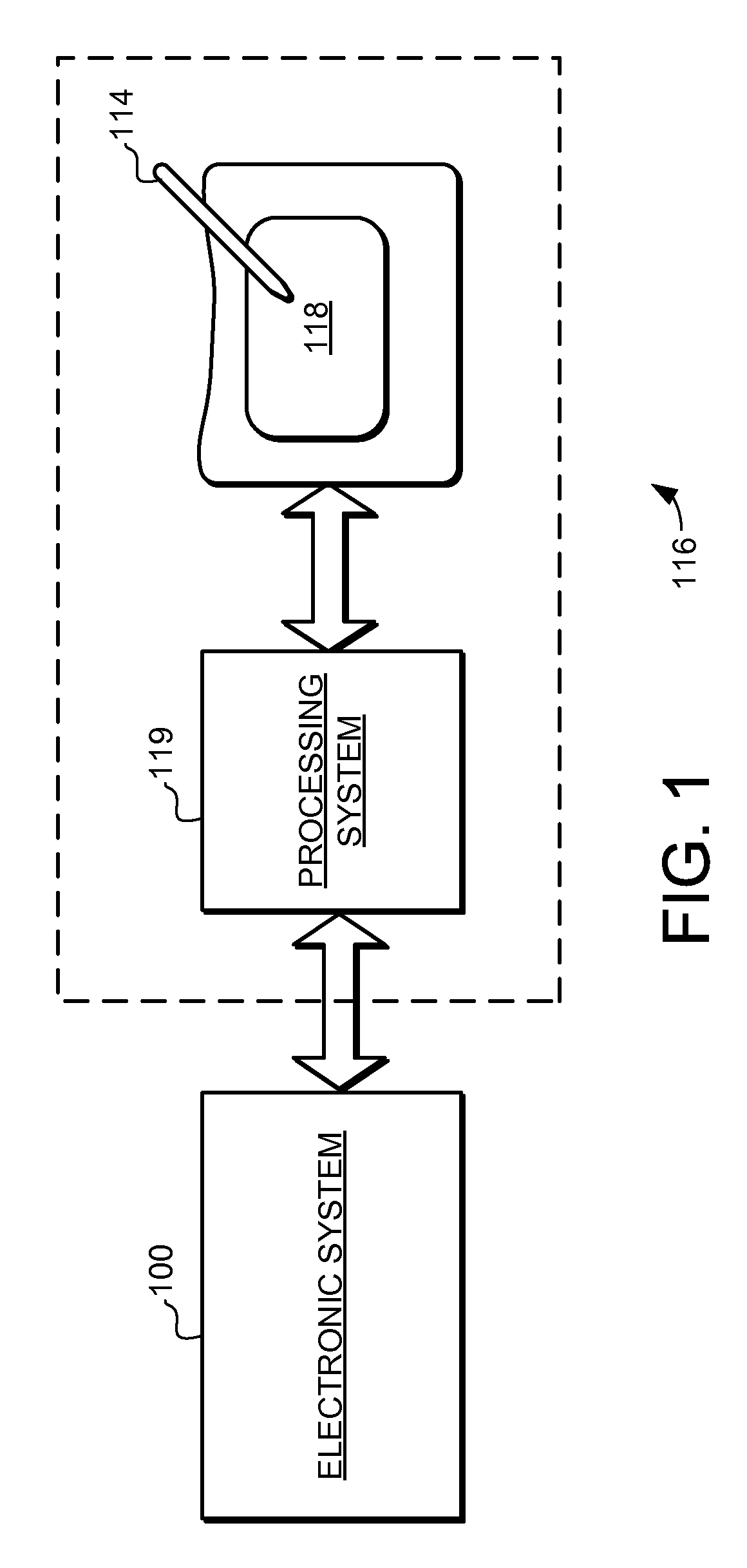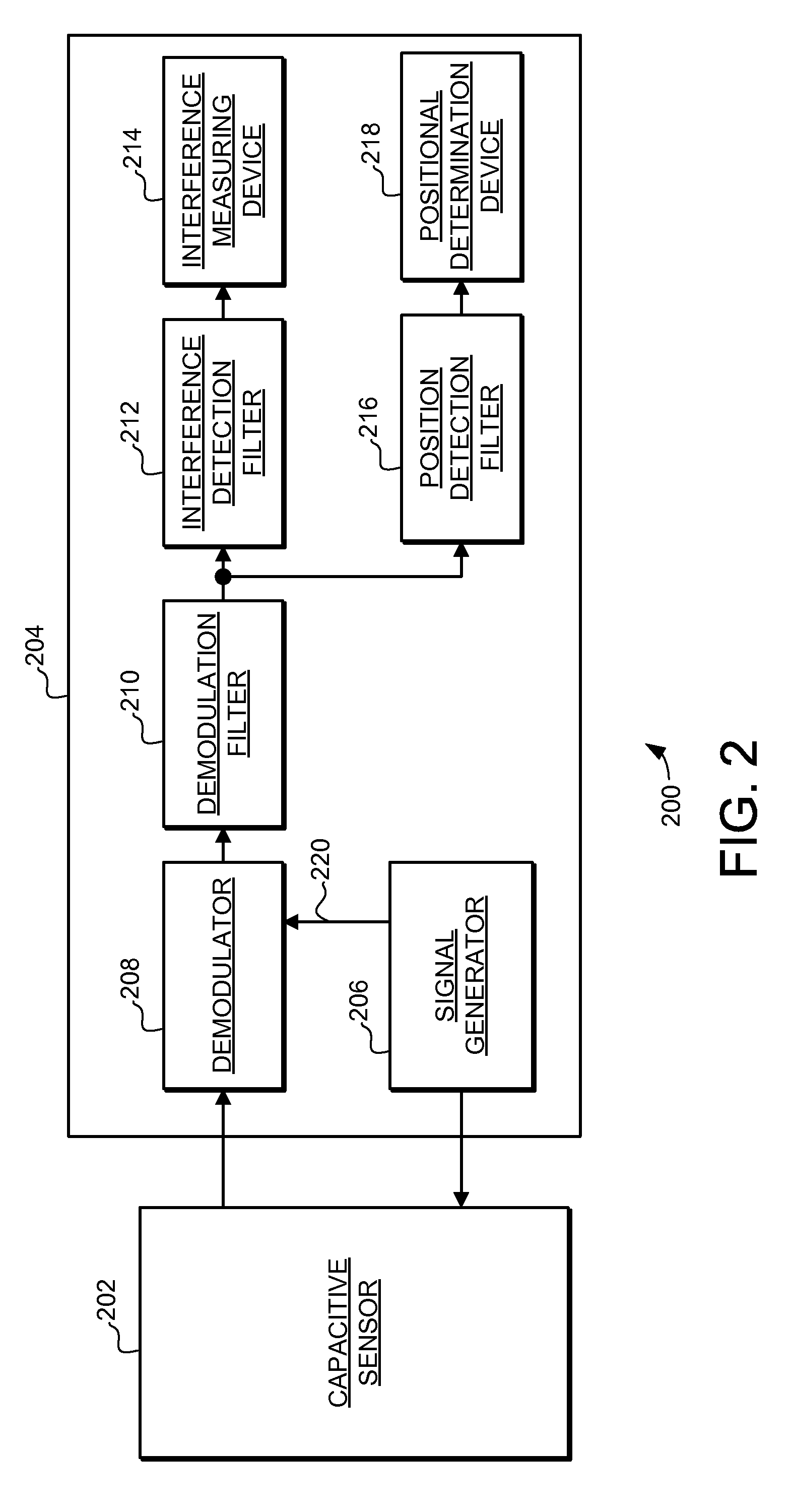System and method for detecting interfernce in a sensor device using phase shifting
a sensor device and phase shifting technology, applied in the field of electronic devices, can solve the problems of long-standing difficulties in identifying and reducing the effects the effect of interference achieve the effect of reducing the effect of noise and other interferers on the sensor device, identifying and removing, and reducing the effect of interferen
- Summary
- Abstract
- Description
- Claims
- Application Information
AI Technical Summary
Benefits of technology
Problems solved by technology
Method used
Image
Examples
Embodiment Construction
[0016]The following detailed description is merely exemplary in nature and is not intended to limit the invention or the application and uses of the invention. Furthermore, there is no intention to be bound by any expressed or implied theory presented in the preceding technical field, background, brief summary or the following detailed description.
[0017]The embodiments described herein provide a system and method for detecting interference in an output of a capacitive sensor device. In accordance with the embodiments, a signal generator is configured to apply a carrier signal to the capacitive sensor device, and the capacitive sensor device is configured to modulate a carrier signal to produce sensor outputs in response to the user input. The carrier signal is switched between a plurality of phases at a switching rate. The result of the carrier phase shifting is that effects of interference in the output signal are broadened in frequency. An interference detection filter is configur...
PUM
 Login to View More
Login to View More Abstract
Description
Claims
Application Information
 Login to View More
Login to View More - R&D
- Intellectual Property
- Life Sciences
- Materials
- Tech Scout
- Unparalleled Data Quality
- Higher Quality Content
- 60% Fewer Hallucinations
Browse by: Latest US Patents, China's latest patents, Technical Efficacy Thesaurus, Application Domain, Technology Topic, Popular Technical Reports.
© 2025 PatSnap. All rights reserved.Legal|Privacy policy|Modern Slavery Act Transparency Statement|Sitemap|About US| Contact US: help@patsnap.com



